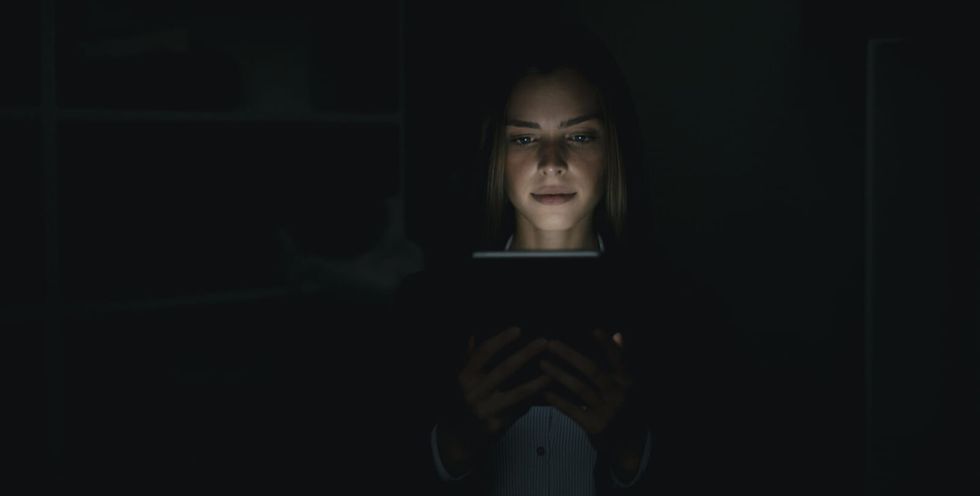Anxious Attachment Style: What Are The Signs & How To Cope
What is an anxious attachment in relationships?In a romantic, polyamorous, or platonic relationship, feeling a sense of support, attention, and acknowledgment is worth experiencing.Essentially, people want to feel adored. RELATED: What Should I Do Today? 10 Fun, Productive, and Effective Ideas For Tackling the DayWe all want to feel included in the loop. It's common to want to get approval, emotional connection, and help from friends, family, and others held in high esteem.On the opposite side of the coin, it's also not farfetched to be scared of losing people's love.So what happens when the fear and anxiety of losing these needs become consuming? Can this apprehension towards the fear of being abandoned and lacking safety control how you act in and view relationships? Maybe you're an anxious person or you have low self-esteem and you're on the mend to try and build a healthy relationship — or several of them. If so, you're in luck. Today, we will break down the causes of an anxious attachment behavioral style, and offer tips on how to notice it and more importantly, how to begin to cope with it so you can better navigate relationships.What Is An Anxious Attachment Style And The Attachment Theory?The attachment theory was founded in the 1950s by John Bowlby, a British psychoanalyst, and later expanded upon by American-Canadain development psychologist Mary Ainsworth.Anxious and (avoidant) attachment highlights how your connection with your primary caregivers, such as parents, grandparents (and more) dictates how you deal with maneuvering in your relationships.Those with this attachment style yearn for intimacy, but they stay anxious about the prospect of whether, for example, romantic partners will meet their emotional needs. There are three other types of attachment behavioral styles in relationships: avoidant, secure, and disorganized -- let's break them down. AvoidantAvoidant (or dismissive) attachment is an attachment style that is associated with issues in intimacy and little emotional investment in relationships.SecureSecure attachment is associated with feelings of safety and trust in relationships. Children who have this style of attachment feel safe and supported by primary caregivers. Adults with this style of attachment can form more long-term relationships.DisorganizedDisorganized (or fearful) attachment is developed when caregivers of children become a source of their fear. Those with this type of attachment style have significant inconsistencies in their behavior and struggle to trust people out of fear of being hurt.How Does Anxious Attachment DevelopNathan Dumlao/UnsplashAlthough there is no clear answer for the exact origins, signs of behavioral expression occur during childhood. Some of those factors can include the following:Emotional Separation A child won't feel protected or secure if a caregiver is neglectful of their needs.Children whose emotional needs aren't met can become specifically anxious and on edge or more prone to experiencing escalated levels of said emotions and overall emotional distance. This behavior can also be present in other parts of their life as they get older, in terms of romantic relationships and friendships where these people don't give the anxiously attached people the comfort they expect.Unstable Parenting Styles The anxious attachment behavior tends to be correlated with inconsistent caretaker and parenting behaviors.It becomes inconsistent when the child's needs are being responded to in one instance, while in other moments, it's the complete opposite.In that case, the caretaker can come off as emotionally unavailable and rude.The hot and cold behavior can make it difficult for the child to understand what their caretaker's behavior means and what kind of reaction they can expect.This then creates anxiety and instability.Caregivers With Anxious TendenciesThis doesn't really have to do with genetics. It's more an association with consistent behaviors repeated by a lineage throughout generations.And without proper management, anxiously attached children could possibly grow up to have their own children who have the same attachment style.What Are the Evident Triggers of Anxious Attachment Behaviors?When navigating this attachment behavior, what are some of the most noticeable triggers in partnerships?Tina Fey, a relationship expert and founder of Love Connection, gives Goalcast the scoop.Constant Search For AttentionPeople may feel low and insecure about how their partner truly feels about them and "frequently seek validation and attention.""They usually go to great lengths to ensure their partner's affection and resort to manipulative or dramatic behavior to get their partner's attention," she says.Codependency In Partnerships Often, codependent people will depend on their partner for "emotional support, validation, and a sense of identity.""They may sacrifice their own needs and desires in order to please their partner, and feel lost or empty without their partner's presence," she says before adding that the behavior can harm "mental health" and create "unhealthy" energy in a relationship. Dương Hữu/UnsplashFear Of Abandonment "People with anxious attachment have an intense fear of being left alone and may feel devastated by even minor signs of rejection or criticism," she says.She also said anxious people tend to "cling" to their significant other "and constantly check in with them to ensure the relationship is secure."Reading Too Much Into Conversations Those who have an anxious attachment style can sometimes think the discussions with their loved ones have "hidden meanings or subtext.""This makes people read too much into minor comments or become preoccupied with their partner's tone of voice or body language," she says.What Are The Subtle Signs of Anxious Attachment?On the surface, it might not always be easy to spot an insecure attachment. Still, there are some particular indications of it.Rachel Nithya Karat, a clinical psychologist and sexual wellness therapist at Allo Health, broke down those subtle instances below for Goalcast.The Need To Be Close To A PartnerAnxious people could feel compelled to be "physically close" to their significant other"[They] may have a strong desire to be physically close to their partner, such as sitting close, touching, or holding hands. They may also have difficulty spending time apart from their partner, even for short periods," she tells Goalcast.Constant Communication Throughout The Day"Anxious individuals may feel the need to maintain constant communication with their partner, such as sending frequent texts, calls, or emails. They may also become anxious if their partner does not respond promptly," says Karat. Priscilla Du Preez/ UnsplashSeeking Validation DailyIt's possible for an anxiously attached person to seek encouragement from their partner on a "regular basis.""They may look for praise or positive feedback to boost their self-esteem and feel secure in the relationship," continues Karat.Feeling Uncertain About Your WorthConcerns about the unknown and self-doubt about worth in a relationship can present in the relationship."They may worry that they are not good enough or that their partner will leave them for someone else," she says.Quick Emotional Reactions"Anxious individuals may be prone to emotional reactivity, such as becoming easily upset, angry, or hurt in response to perceived rejection or criticism from their partner," says Karat.Idealization Of Partners' Behaviors Good Or BadAnxiously attached people can put their partners on a pedestal, disregarding "negative qualities or behaviors.""They may also have a strong desire to please their partner and may avoid expressing their own needs or opinions to avoid conflict," she says.Anxious Attachment Styles in DatingThose with an anxious attachment style could hold others in high esteem but think very low of themselves.They tend to be highly aware of their significant others' needs. But, they tend to have insecurities and anxiousness about how much value they add to the relationship.They may also blame themselves for not being deserving of love if a cherished one rejects them or doesn't respond to their needs.Additionally, the fear of abandonment could also cause anxious people to feel jealous, act clingy, or question their partners.Tips on How To Maintain A Relationship With An Anxious Attached PersonIf you are in a relationship with an anxiously attached person, there are a few ways to help them feel heard and appreciated.Show AppreciationEven if you believe you are showing your appreciation for an anxiously attached person, they may not notice those cues.In order to make the gratitude more apparent, explicitly expressing things such as "I am grateful for you" or "Thank you so much for showing me…" can be helpful.Pay Attention and Provide Reassurance While Communicating Because anxiously attached people have self-doubt and insecurities, they will still tend to seek reassurance that all is okay.But, if you directly express your love and adoration, they will be more open to accepting that love from you instead of just assuming they know their true feelings.As stated before, verbally assuring them that they matter to you as a partner will help them see you are in the relationship for all the right reasons and are more inclined to be receptive to their needs. Etienne Boulanger/ UnsplashLearn Their Attachment StyleReading more about attachment theory, attachment triggers, and familiarizing yourself with your significant other's attachment style can help you better understand how your partner operates.It's always a great thing to do this when you have hopes for your partner to be in your life for a long time.Be True To Your WordPeople with anxious attachment struggle to trust others and worry about abandonment.To better prevent this, you have to show them why they are the person to be vulnerable with.If you make a promise to do something or go somewhere, be sure to fulfill that.Promises can also coincide with boundaries. When doing things for your significant other that you said you would, you should also set evident boundaries and expectations for what you will and will not accept.Can You Fix Your Anxious Attachment Style?Fortunately, attachment styles can change.The changes can also occur by themselves through experiencing a connection with someone who has a securely attached style. They could foster significant emotional closeness, peace, and security.The newfound experience can also cause perceptions to be altered, bringing in new patterns and habits that benefit your spirit.In other cases, you might need to try a bit harder to change your attachment style.You can't control what happened in the past, but you can make your future a different reality.How To Cope With An Anxious Attachment Style Sasha Freemind/UnsplashAccording to Dr. Jessie Stern, psychologist and Research Scientist at the University of Virginia, the very first step towards developing a secure attachment style is self-awareness."Reflect on your past relationships: What experiences in childhood made you feel like you had to work to feel loved? Did you experience loss or separation from a caregiver? How are you treated in your current relationships, and does this trigger or soothe your attachment anxiety?" she tells Goalcast.Below are some other ways Dr. Stern can help build more security in your relationships.Therapy For Attachment Consider going to a therapist to explore and get assistance on better ways to cope with feelings."Seek out evidence-based, attachment-focused therapy such as Emotion-Focused Therapy for couples," she says.Take A Small Step Forward Each Day To Reduce AnxietyWhen you find yourself feeling a bit anxious, take a center to recenter and take "one small action to calm your anxiety."If your partner doesn't call you back right away, think about some possible non-threatening reasons that give them the benefit of the doubt (for example, 'they're probably busy at work, or enjoying lunch with their friends')," she says.Learn To Be Comfortable By YourselfThere is nothing wrong with spending some time in solitude from time to time."Do some solo activities that soothe you, align with your values, or remind you of your self-worth, independent of a relationship," she says.Examples of this would be listening to some music, reading a book, or cooking your favorite meal.Reflect On Who Is Reliable In Your Life"Think about a person you can depend on to be there for you when needed. Research shows that simply calling to mind a dependable 'secure base' boosts attachment security, especially if done repeatedly," she says.Keep Friends And Romantic Partners That Make You Feel The Most Secure Around YouYou can't choose the family that you were born into, but you can choose the people you spend time with when you are an adult."So choose those who make you feel safe, loved, and valued unconditionally; choose those who are dependable and follow through; choose the people who leave you feeling happier, calmer, and more settled in your mind and body," she says.All in all, putting consistent effort in, such as reading, working with people close to you, and seeking the assistance of a therapist, is fundamental to changing your attachment style.





























